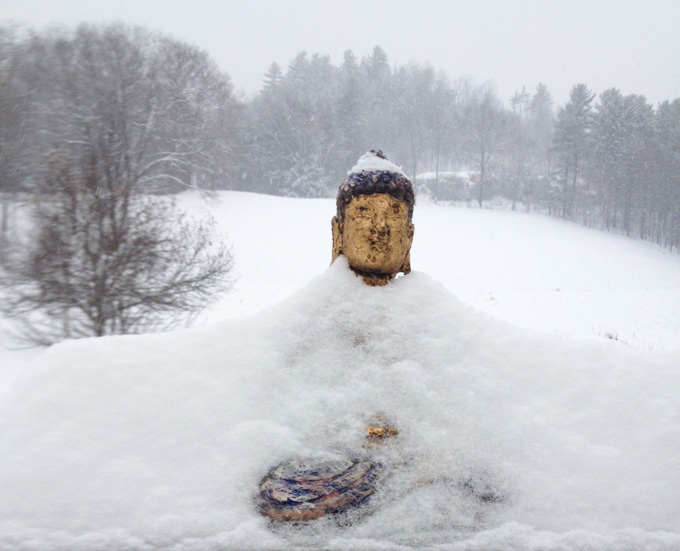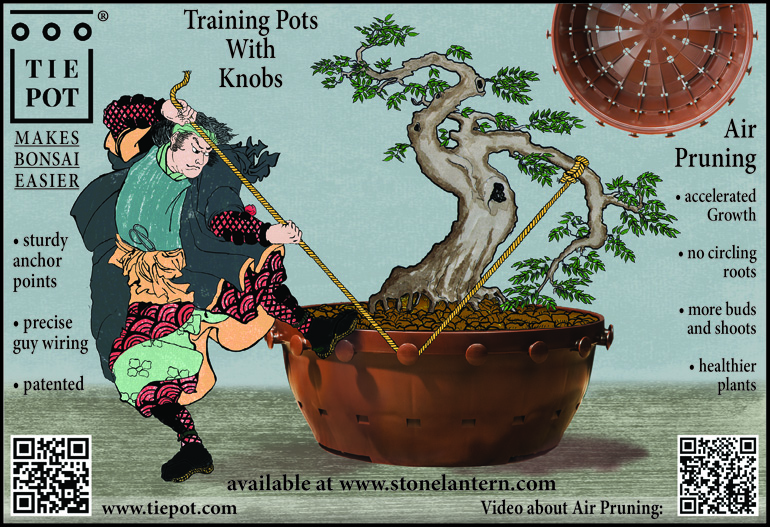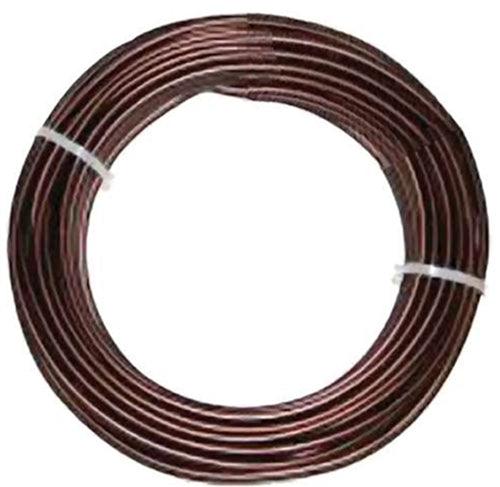More Bonsai Stories
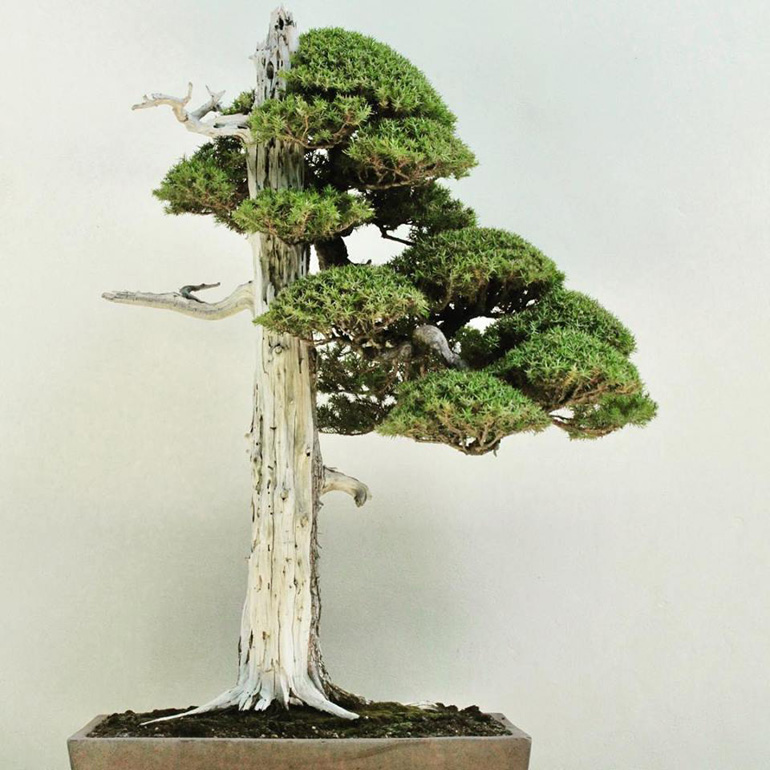
I like the natural, almost untouched feeling of this tree. Here's what Michael Hagedorn wrote about it.... "Foemina Juniper styled in the manner of a needle juniper, taking two yearly trims with a good cleaning out of detritus from the pad interiors. Old tree from California, begun decades ago by Shig Miya."
Continuing with yesterday’s ‘Bonsai Stories,‘ we’ve got a few more of Michael Hagedorn’s trees and their short stories. You can follow Michael on facebook or, for more in depth stories on most of his trees, you can visit his website/blog.
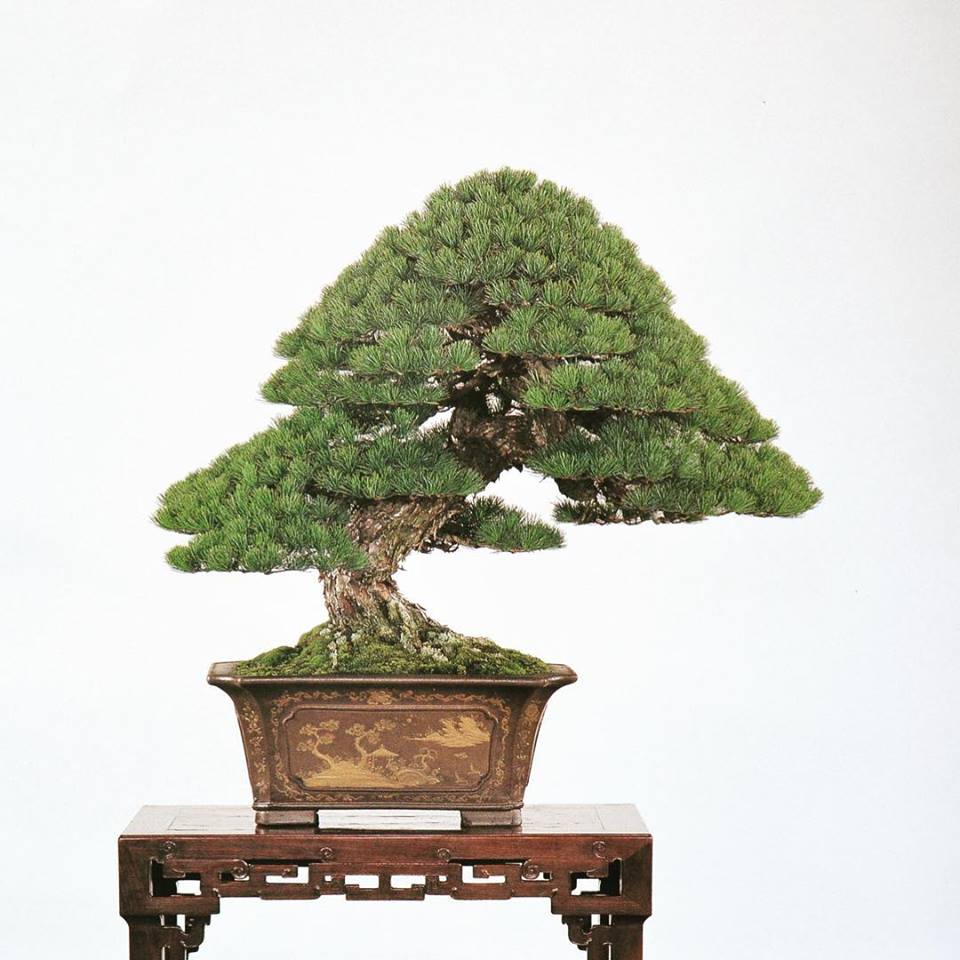
Unlike the tree above, this sign of human interaction is obvious. Here's Michael's caption.... "A trip down memory lane...work from my apprenticeship. This photo is from the Kokufu show, I think it was #80, my last year with Suzuki in 2006. I hope the tree is doing well."
Michael again... "I collected this Rocky Mountain Juniper and initially styled it with the help of my first apprentice Bobby Curttright. Recently I turned it around to this front with the help of current apprentice Andrew Robson. I fear the arrival of another apprentice will force a third front choice and exasperate an already dizzy tree."
Bonsai Stories
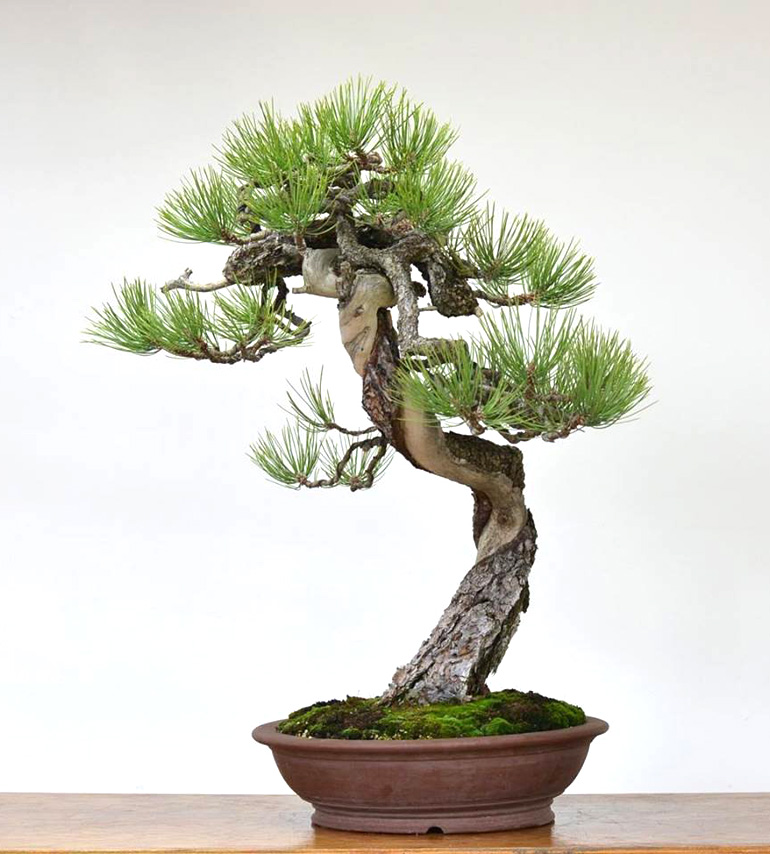
Here's what Michael Hagedorn (Crataegus Bonsai) wrote about this tree... "Ponderosa Pine collected by the Backcountry Bonsai guys, styled years ago in a Seasonal class. Much of the deadwood was hiding under bark and was created courtesy of borers of the Rocky Mountains. We've written them a thank you note but the posting address was a bit vague."
A little information can enrich our appreciation of any bonsai. Every tree has a story. Some have engaging stories, like the one above (a good story teller is always a plus), with a lot of information packed into about fifty words and a touch of Michael Hagedorn’s humor thrown in at the end.
At the other end of the spectrum, you get a lot of people posting trees with nothing. No variety, no artist, no owner, and no effort to find out.
–
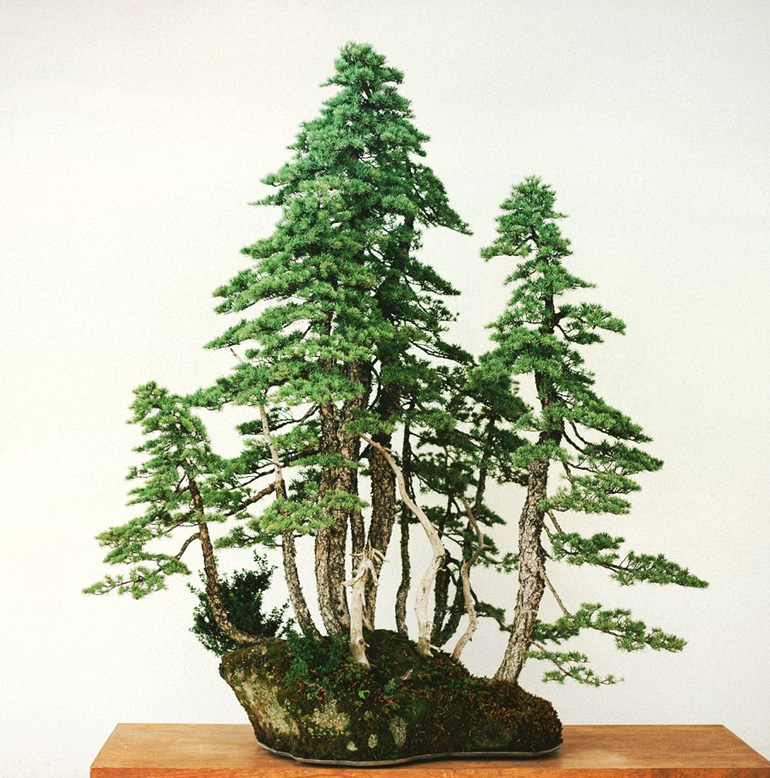 Even this short quote by Michael offers useful information… “Mountain Hemlock from our moist Northwest—this tree lives at the Portland Japanese Garden” Not to say there isn’t a lot more about this rather famous bonsai, and if you’re willing to pick up a thread here and there, it’s all there for you.
Even this short quote by Michael offers useful information… “Mountain Hemlock from our moist Northwest—this tree lives at the Portland Japanese Garden” Not to say there isn’t a lot more about this rather famous bonsai, and if you’re willing to pick up a thread here and there, it’s all there for you.
–
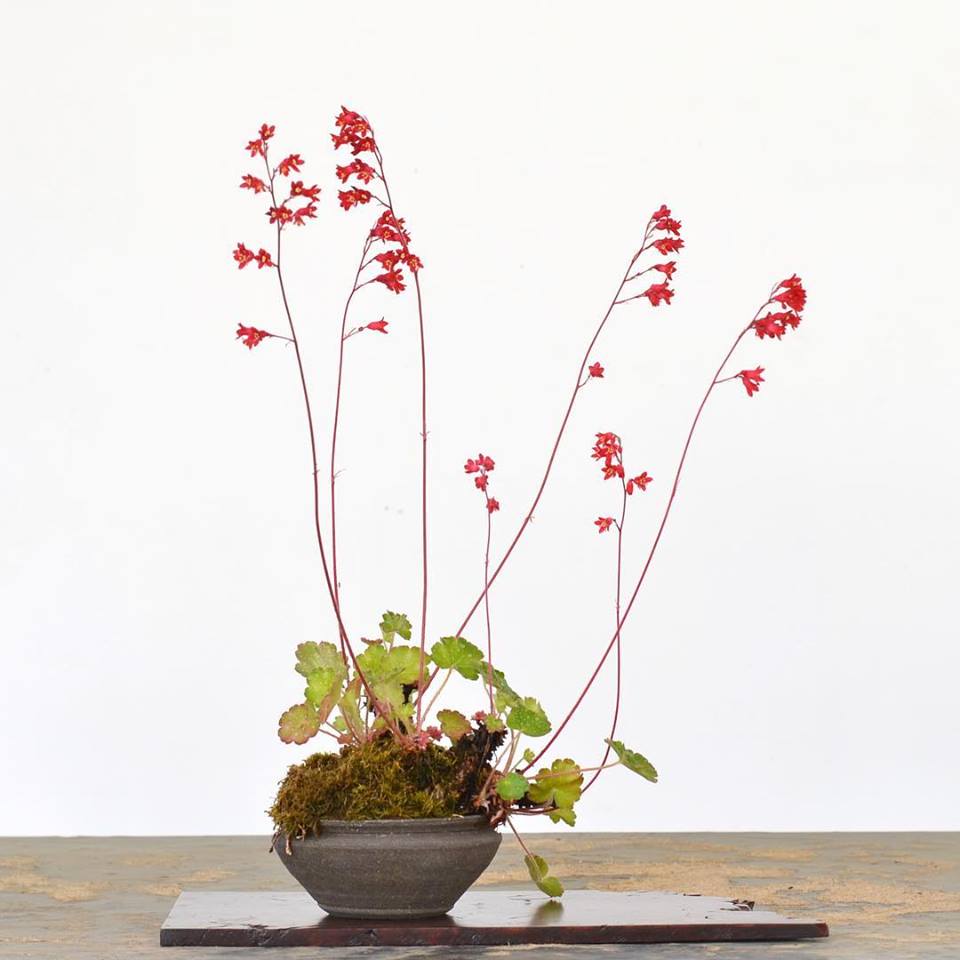
Even a simple accent plant deserves a story… “Saxifrage, a commonly planted perennial called coral bells, as an accent for bonsai. These are incredibly tough plants to grow in small pots, being early succession ‘rockbreakers’ they will grow where nothing else can, like on cliffs. And they are cheerful! There’s a lesson.”
Festive Bonsai
I don't know if you'd call this tree festive, but it has a bright spirited quality. It's an English yew (Taxus Baccata) by Stefano Frisoni from Italy
I just spent 30 mins cruising fb looking for a Christmas decorated bonsai to feature, but came up blank. I did find this in our archives. It has a bit of Holiday flavor and I like it, so why not?
Continued below…
Nice tree. Fantastic pot with enough festive color to provoke a Holiday feel. At the time (2012?) the tree was eleven years from stump. The artist/owner at the time was Mariusz Komsta
Continued from above…
From the shameless promotion department… There are at least three reasons why I spend so much time on Bonsai Bark. To spare you I’ll skip the first two… the third is to promote our Stone Lantern website. I’m mentioning it now because I just went through and put together some new specials and lowered prices on some bonsai essentials. We’ll call it our Year End Special.
Enough said. I hope you continue to enjoy Bonsai Bark right though 2019 and beyond.
This Shimpaku planting on a slab by Mariusz Folda was exhibited at Noelanders Trophy 2013. I like the way the trunks complement each other with their deadwood and live veins
I haven't seen that many Myrtle bonsai and of those I have seen, this one is the most impressive. Though the flowers aren't necessary to appreciate the tree, they add a nice touch. The tree belongs to (or belonged to) Mauro Stemberger
Upside down bonsai. This Japanese maple and Mondo grass planting turned up in Bonsai Empire's facebook photos with this caption... "Very original display of a Japanese Maple by Bill Valavanis! Pot and ceramic root stand by Dale Cochoy"
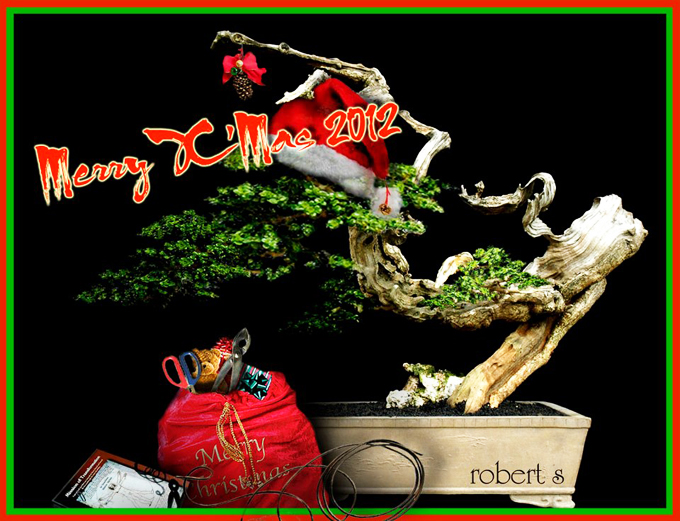 Robert Steven’s Christmas card six years later.
Robert Steven’s Christmas card six years later.
Bonsai Holiday Greetings from Another Place & Time
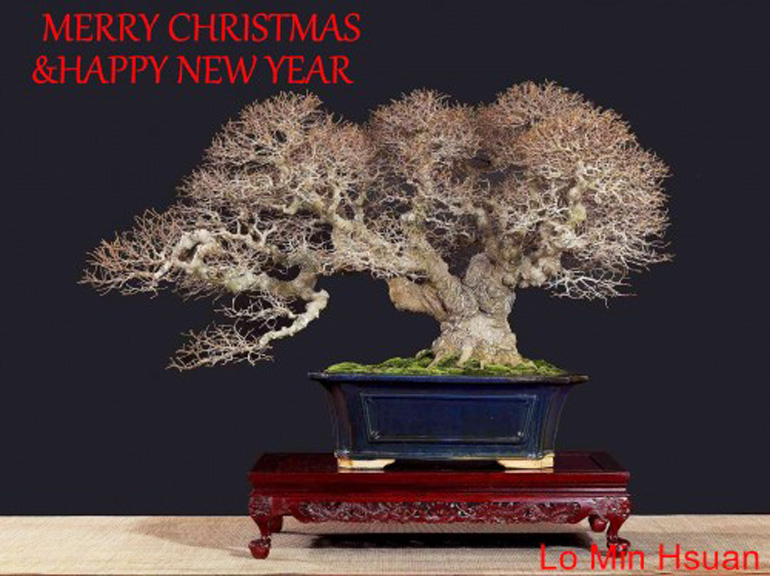
Chinese hackberry by Lo Min Hsuan
It’s the Holidays and we all need a little down time, so today it’s back to our archives. All of today’s photos are from Lo Min Hsuan’s Bonsai blog and they all appeared here exactly eight years ago. That’s a great thing about bonsai of this magnitude… they are already so old that eight years might as well be yesterday.
–
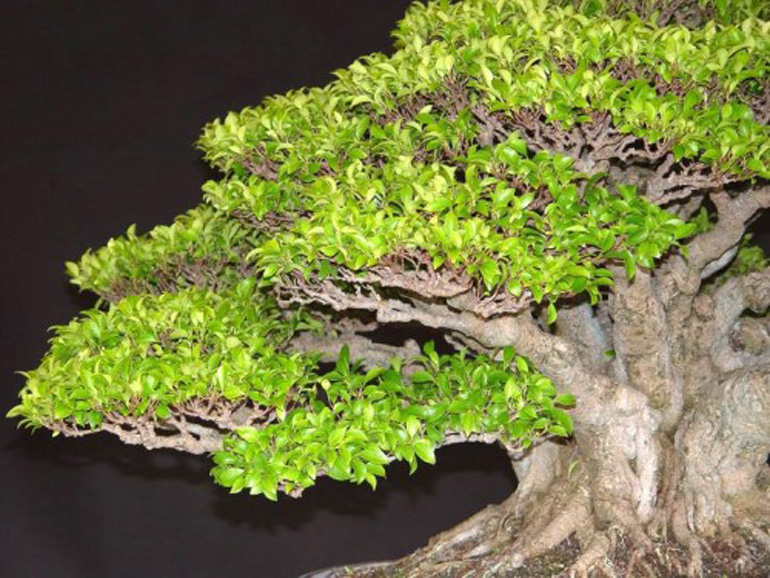
I've always appreciated a good partial bonsai shot. Not only are the best ones pleasing to the eye, but they can emphasize features that you might otherwise miss
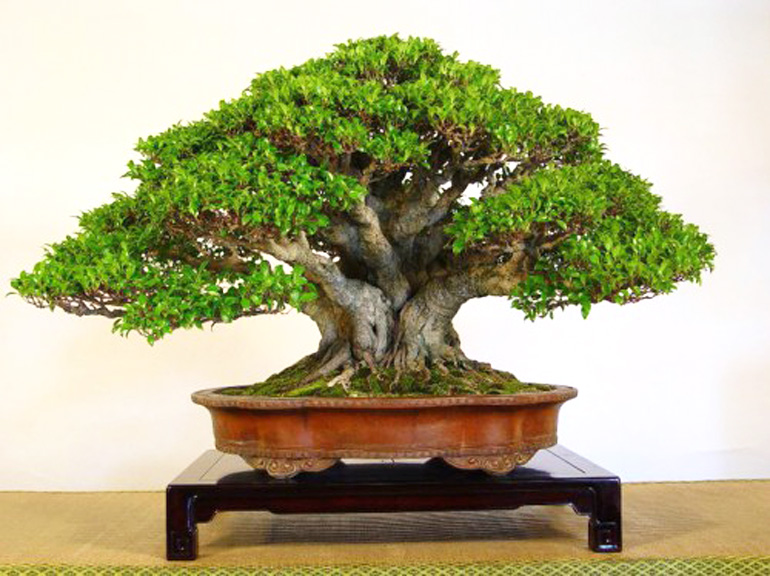
The same tree in all its glory. Ficus microcarpa by Min Hsuan Lo.
Happy Bonsai Holidays – Merry Bonsai Christmas
Though most Christmas trees have their charm and some are genuine works of art, this one by Nacho Marin has to be one of the best we've seen
Peace on earth and goodwill to you, your loved ones and everyone else on this lovely troubled planet. This is not the first time we’ve shown this bonsai Christmas tree by Nacho Marin (2013 was first), but until we find one we like more, it won’t be the last.
Just before and just after.
Evolution with striking red Bottlebrush flowers.
Happy Bonsai Solstice

I don't know if this qualifies as a Christmas tree, but it does give you a pretty good idea of what northern Vermont looks like this time of year (this photo was taken several years ago... it rained last night and melted most of the snow* and the sky is grey... oh well).
I hope you and your loved ones are enjoying a relaxing Holiday Season (easier said than done!) and that you have a Merry Christmas, Happy Hanukkah (a little late), Sweet Solstice (today) and whatever you might celebrate. And that you enjoy a Happy, Healthy and Prosperous New Year.
If you've been around for a while you might recognize the photos shown here. Busy with a thousand loose ends, so rather that put together a new post, I borrowed this one from 2013 (with a few revisions)
*If you field grow bonsai and you live where temperature can get down to -30F (-34C) or even lower some years, you want a deep snow cover before the real cold sets in. So rain this time of year is unwelcome.
Eccentric or Just Twisted?
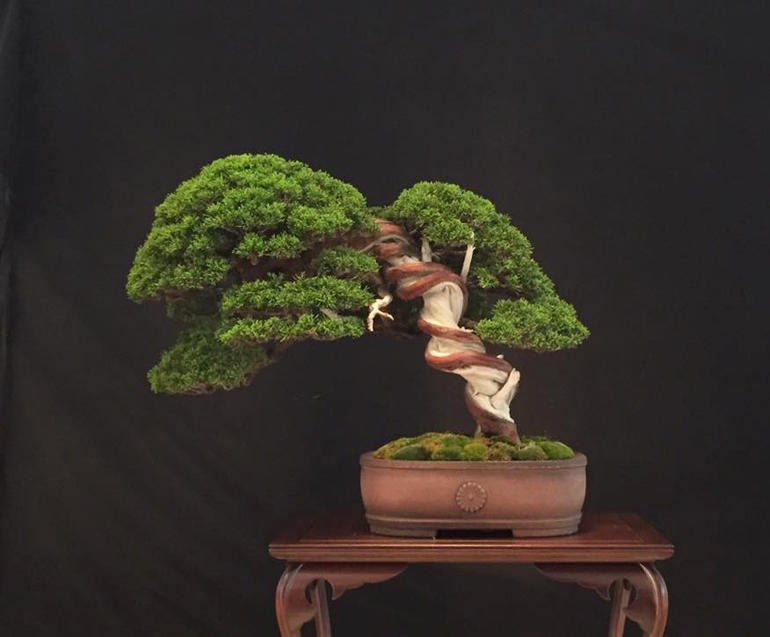
Doing the Twist. This tree belongs to Mauro Stemberger (Italian Bonsai Dream). Mauro has one of the most dramatic bonsai collections in the West, and though this one certainly qualifies, is there a line between dramatic and eccentric?
Continuing with ‘Eccentric Bonsai’ from two days ago, here’s another one from our archives (November, 2016). Two of the trees in this post are naturally twisted and the other two were twisted by the hands of man. I don’t think you’ll have any trouble telling which is which.
Even though there’s something unnatural about many of the twisted by-the-hands-of-man bonsai, some work better than others and this one qualifies. Photo by Jonas Dupuich of Bonsai Tonight.
–
This natural looking twisty pine with its well chosen pot was posted by Tae-Kukiwon-Bonsai (aka Eduardo Mourão Guedes).
Twisted in the extreme. I’m pretty sure I've never seen tree this twisted, though there are some Whitebark pines Pinus albicaulis at the treeline on Mt Lassen in Northern California that come pretty close. This photo is from Carlos van der Vaart.
Bonsai Tie Pots in Hoosierland, An In-depth Review
The following is from Steve Moore’s Bonsai in Hoosierland blog. It was posted earlier today with no prompting by anyone connected with Tie Pots. I like it so much that I couldn’t wait a minute to repost it. My thanks to Steve for doing this. There is no way I could have done it nearly as well…
A New Kind of Training Pot
In Steve Moore’s own words (and photos)…
At least, it’s new to me. And it’s also new in the sense of being different from other training pots – different enough to be granted a patent. The pot is made in Austria by an outfit called “Kristen & Zahalka”, possibly the patent holders. I bought mine online from Stone Lantern, a vendor I consider worthy of repeat business. (More on both a bit later.)
The manufacturer simply calls it a “tie pot.” One look at a picture and you see why: those knobs all around the outside rim are made to be anchor points for guy wires.
| A “tie pot” for bonsai-in-training. |
–
| Close-up of the anchor knobs. |
–
| Internal ridges to guide roots down to holes to the outside. |
| A closer look at the system of ridges and holes |
–
| Root tips that enter the side holes (previous picture) emerge from these downward-facing openings. |
–
| A view against the sky to show all the holes! |
–
| 12-oz. beverage can for a size reference |
–
| Dwarf yaupon holly, first in line to spend a year or two in the tie pot. |
Thank you Steve! I look forward to your follow up
Colorado Blue Spruce, Before & After
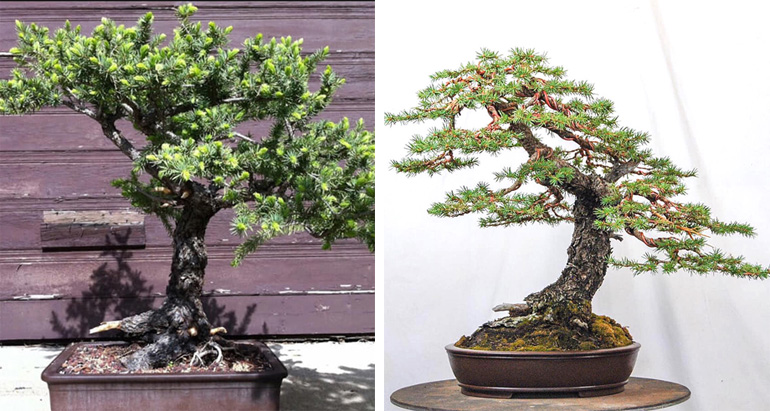
Here's what Todd Schlafer wrote about this transformation... "Before and after - Colorado Blue Spruce. This tree has a lot of sentimental value. This tree was given to me by Jerry Morris. We had dug several trees and after work I went to his greenhouse to build boxes and get them reestablished. At the end he said 'Why don’t you just take this one home." I was ecstatic! Structure was set in 2010 with @bonsaimirai and I wired it out on my own. It’s fun to see the progression of the tree and my eye." From Todd's fb timeline
It’s not easy to see the potential that Todd Schlafer saw when you look at before photo of this collected Colorado blue spruce (Picea pungens). Todd provided one photo part way through the process (below), but you’ll have to fill in the gaps if you want to fully understand how he got from before to after.
–
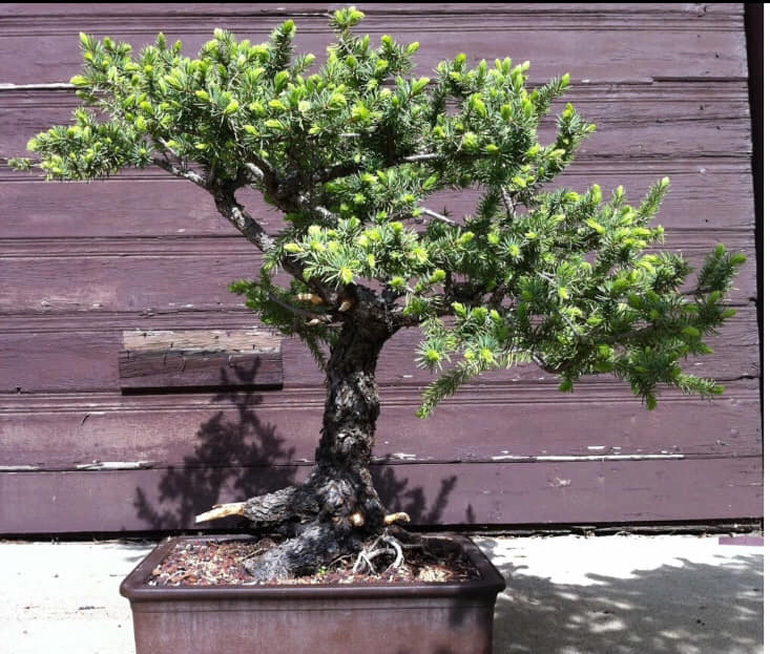
Before. The trunk looks a lot straighter than in the after photo (below)
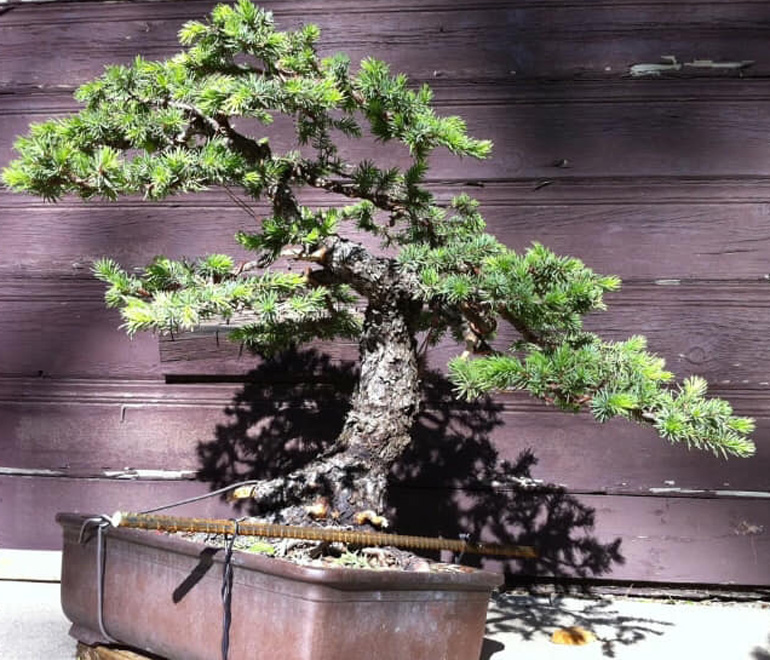
Getting there. A lot has happened between the before photo and this one. You might notice the rebar
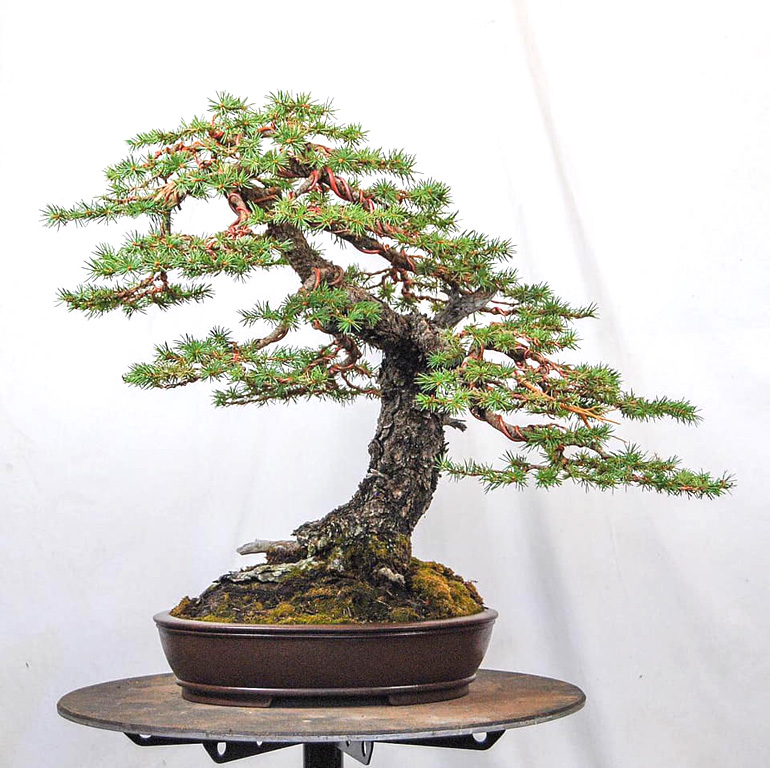
After. You can tell by little jin (piece of deadwood) sticking out, that the view is very close to the view in the before photo with its straight trunk. So how did we get that soft curve in the trunk?
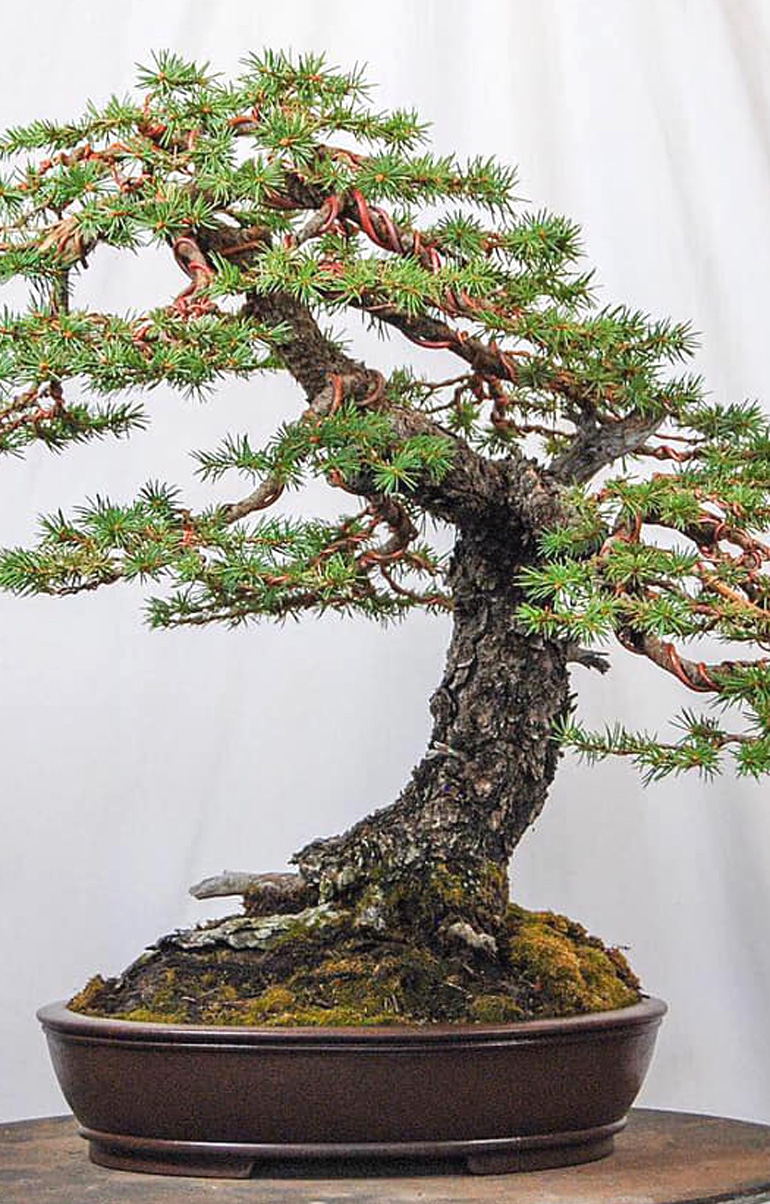
Closeup of the trunk and bark.
Eccentric Bonsai: Too Strange, or Just Strange Enough?
Strange as this old tree is, it all works together with a blend of eccentricity and balance (and remarkable ramification*). This photo and the others in this post are from Peter Tea Bonsai
Way back in 2009 and early 2010 we ran a series of posts that we called Eccentric Bonsai. Maybe it’s time to resurrect the series. If so, this one-of-a-kind Trident maple seems like a good place to start.
We originally posted this tree in December, 2011. It was borrowed from Peter Tea’s blog. Peter was an apprentice at Mr. Junichiro Tanaka’s Aichi-en bonsai nursery at the time. Peter takes good photos and writes of his experience there with a fresh, easy to read perspective. To an old editor that’s an unbeatable combination.
–
Here's that unusual (grotesque?) nebari up close. And here's what Peter had to say about it: "A close up of the root spread. Even the root spread of this tree is strange. Answer me this, would a more natural radial root base go well with the rest of the tree? or vise versa? My first impression of this root base was, “what is this?” When I looked at the overall tree again this root spread turned out to be so right for this tree (there is an important lesson to learn here). If you don’t believe me, look at the picture of the front of the tree again. ;o)."
A profusion of small, colorful fall leaves almost completely cover the tree's eccentric nature. Though winter is a great time to show deciduous trees at their naked best (see above), fall has its advantages too. I wonder if the tree had been defoliated... thus the very small leaves
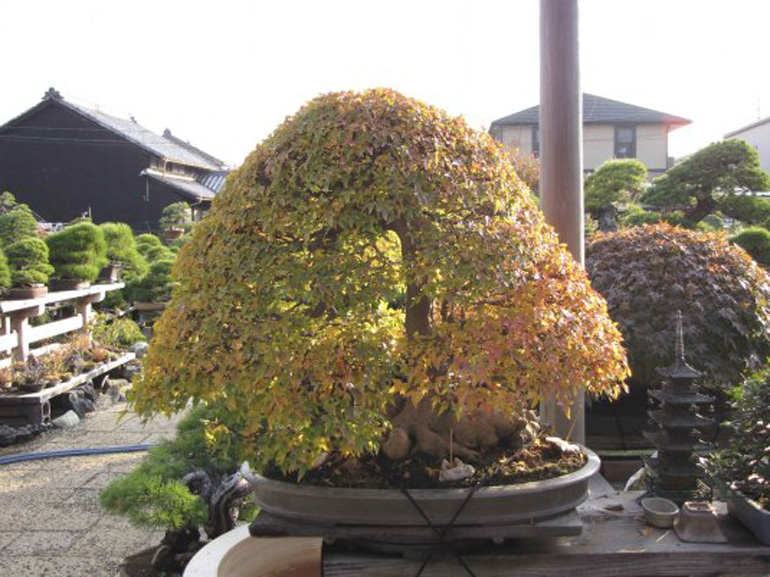
You can see a little piece of Aichi-en in this shot
*Ramification means branching and is often used to refer to highly developed fine branching. Something this tree has in spades (and something that often distinguishes Japanese bonsai from bonsai in the West)

